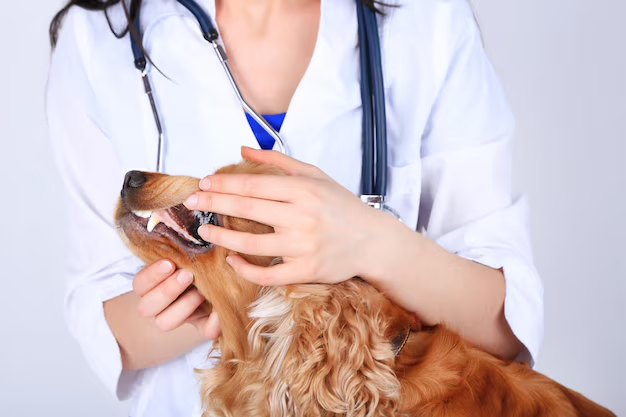Does Your Furry Friend Have Cataracts? A Comprehensive Guide to Identifying Eye Issues in Dogs
The affection and joy our dogs bring into our lives are priceless. These loyal companions rely on us for their well-being, and ensuring their eyes are in good health is crucial. Vision plays a significant role in a dog’s life, helping them navigate their surroundings. But what happens if their sight starts to blur due to cataracts? Let’s delve into how you can spot cataracts in your beloved pet and what it means for their quality of life.
🐾 Understanding Cataracts in Dogs
What Are Cataracts?
Cataracts refer to the clouding of the lens in your dog’s eye, which can impede vision. This condition can be likened to looking through a frosted window. Cataracts can vary in size and density and may develop gradually or appear suddenly. While they can affect one or both eyes, the impact on vision can depend on their location and severity.
Key Characteristics:
- Develops as a cloudiness in the eye lens.
- Can appear as a bluish, gray, or white layer.
- May lead to partial or total vision impairment.
Common Causes of Canine Cataracts
Understanding the root causes helps in both prevention and management. Cataracts in dogs can result from various factors:
Genetics: Some breeds are more prone, including Cocker Spaniels, Poodles, and Siberian Huskies. Genetic predisposition can lead to early onset cataracts.
Age: Older dogs may naturally develop cataracts as part of the aging process.
Diabetes Mellitus: This common health issue can rapidly increase cataract formation due to excess sugar levels affecting the lens.
Eye Injury or Trauma: Damage from an accident or a blow to the head can lead to cataract development.
Nutritional Deficiencies: Poor diet lacking the right nutrients can impede eye health.
🧐 Signs Your Dog May Have Cataracts
Visually identifying cataracts early can make a significant difference in managing their progression. Here’s what to watch for:
Observable Symptoms
- Cloudy Eyes: Noticeable clouding or color change in the dog’s eye.
- Clumsiness: Bumping into furniture or walls, indicating vision impairment.
- Difficulty Navigating in Low Light: Struggles in dim or dark environments.
- Changes in Behavior: Hesitation in performing tasks they usually enjoy or exhibit nervousness in unfamiliar areas.
- Eye Rubbing: Increased rubbing of eyes with paws or against surfaces.
Behavioral Changes
Dogs with cataracts might start getting easily startled or anxious due to diminished sight. They might also exhibit:
- Reluctance to jump or play
- Changes in sleep patterns due to uncertainty
- Increased dependence on their sense of smell and hearing
🏥 Steps to Take if You Suspect Cataracts
If you notice these symptoms, a proactive approach is necessary to ensure your dog’s comfort and health.
Consulting a Veterinarian
A thorough veterinary check-up is crucial. The veterinarian will perform an eye examination and possibly recommend further tests to determine the severity and underlying causes of the cataracts. This can include:
- Ophthalmoscopic Examination: To inspect the lens directly.
- Tonometry: Tests for glaucoma, a potential complication of cataracts.
- Blood Tests: To rule out diabetes or other systemic diseases.
Ongoing Management and Care
While cataracts can be treated surgically, managing the condition with the help of a vet can prolong your dog's quality of life. Some steps include:
- Regular Eye Check-ups: Monitoring the progression of cataracts for potential interventions.
- Dietary Adjustments: Nutrient-rich diets, especially those high in antioxidants, can support eye health.
- Environmental Adjustments: Making home modifications to assist your dog, such as clear pathways and marked steps.
🔍 Exploring Treatment Options
Treatment varies based on the severity and underlying cause of the cataract.
Surgical Intervention
Cataract Surgery is often considered the most effective treatment for restoring vision. This procedure involves removing the cloudy lens and replacing it with a synthetic one. Before considering surgery:
- Assess the dog's overall health.
- Evaluate the likelihood of postoperative complications.
- Discuss costs and recovery time.
Non-Surgical Management
For some, surgery might not be an option due to age or other health conditions. In such cases, managing symptoms becomes crucial.
- Eye Drops: May help reduce inflammation and manage other eye-related conditions.
- Lifestyle Changes: Routine walks in familiar environments and interactive play using sound rather than sight can enrich life.
🗒️ Practical Tips for Caring for Dogs with Cataracts
- Routine Care: Keep a regular schedule to provide a sense of security.
- Scented Paths: Use scented oils on key objects or areas to guide your pet.
- Avoid Moving Furniture: Keep furniture and favorite routes unchanged to minimize confusion.
- Close Supervision: Monitor behavior closely for any sign of stress or discomfort.
- Safe Environment: Ensure the area is safe from sharp or dangerous objects.
🌟 Quick Summary: Key Takeaways for Pet Owners
- 🐶 Cloudy Eyes: A primary indicator of potential cataracts.
- 👀 Behavior Shifts: Notice changes in playfulness and navigation.
- 📅 Vet Visits: Regular veterinary check-ups ensure timely intervention.
- 🔧 Home Adjustments: Modify living spaces to cater to diminished vision.
- 🔥 Dietary Focus: Nutrient-rich diets can support overall eye health.
By understanding and identifying the signs of cataracts, you can take actionable steps to maintain your dog’s quality of life. While cataracts can be concerning, knowing the symptoms and seeking timely veterinary care can make a significant difference in how your dog experiences the world. Keep your steadfast companion by your side for as long and as comfortably as possible by being proactive about their eye health today.
